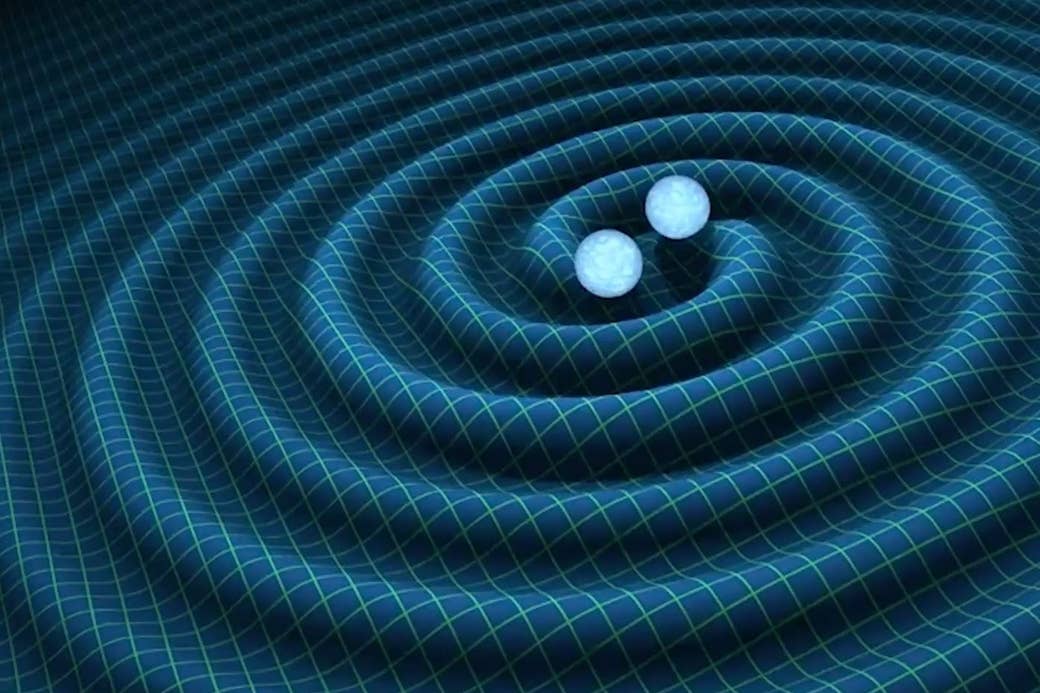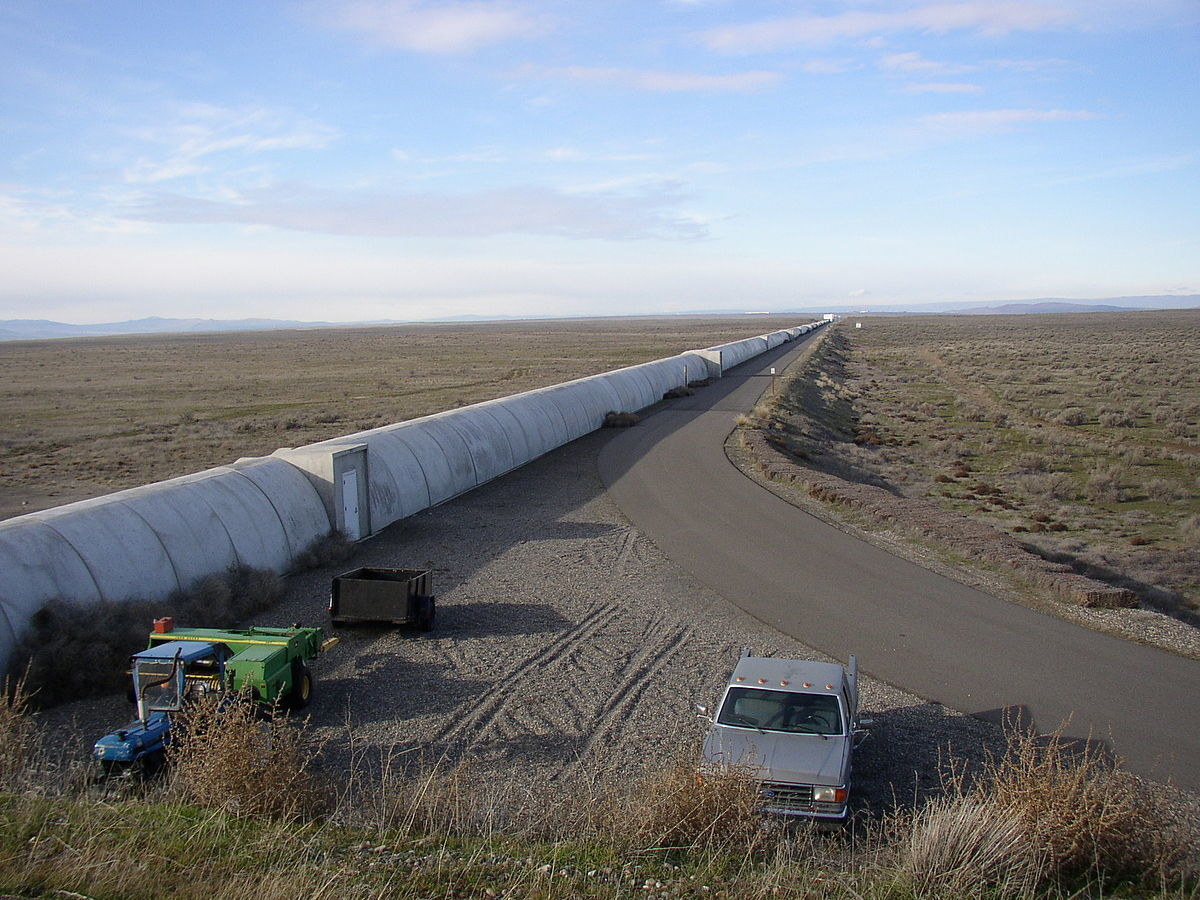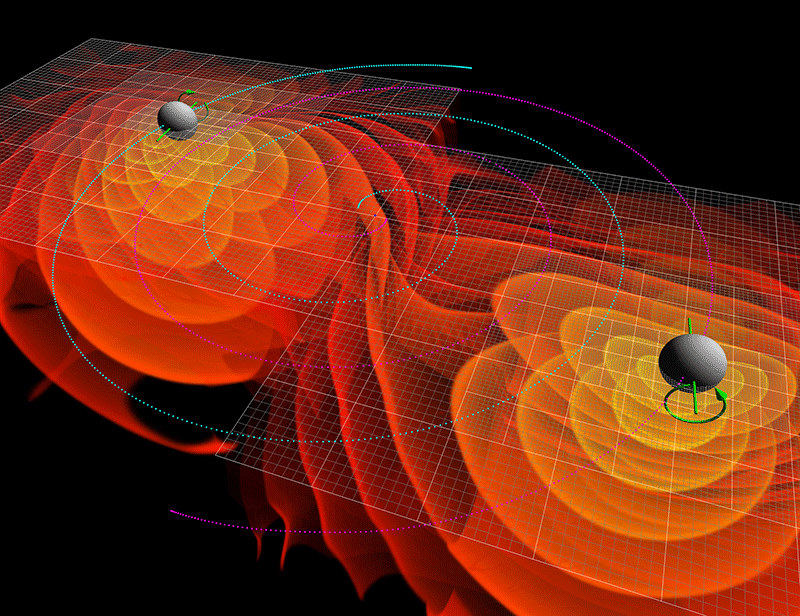
One year ago today the Laser Interferometer Gravitational-Wave Observatory (LIGO) in the US picked up a signal at its two detectors in Hanford, Washington, and Livingston, Louisiana. The “chirp” of data was analysed for months, by hundreds of scientists, and rumours built in the scientific community. In February this year, scientists finally announced that they’d detected gravitational waves.
Gravitational waves are ripples in space itself and were predicted over a century ago. Their discovery – and the speed with which it happened – has changed “everything”, researchers in the field tell BuzzFeed News. It’s changed their whole approach, and hinted that the universe may be full of things we didn’t expect. Excitingly, it’s also opened up a new way of looking at the universe, and gives a tantalising possibility of answering some of the biggest mysteries in physics, including “dark energy” and the problem of reconciling Einstein’s relativity theory with quantum mechanics.
“It’s been an amazing experience,” Sheila Rowan, the director of Glasgow University’s Institute of Gravitational Research and one of the researchers on LIGO, tells BuzzFeed News. “You dedicate your career to something you believe in, but it's a long-term prospect. The excitement of seeing it happen has been amazing and at times quite surreal.”
"The excitement of seeing it happen has been amazing and at times quite surreal.”
The sheer speed of the detection took scientists enormously by surprise. It had been anticipated that it would take months or years of looking before LIGO detected any signals – instead they saw two, possibly three, in the brief three-month window that it was switched on. Even more amazingly, the waves were detected before LIGO was even officially looking for them – while the engineers were still fine-tuning the machinery. “We hadn't officially started,” says Rowan. “We were just in engineering mode. We've been spending decades working on this, and everyone was prepared for another few years’ wait.”
Alberto Vecchio, a professor of astrophysics at Birmingham University who also worked on LIGO, tells BuzzFeed News that he agrees. “Most reasonable people, people who weren't outrageously optimistic, thought we’d have several years of observations, maybe the first detection in three to five years.” The discovery, he says, has "changed everything".
The next surprise came when they began to look at the data. Vecchio and Rowan says that scientists expected the first thing they saw would be a collision between two neutron stars – weird, super-dense objects left over when a giant star dies in a huge explosion called a supernova.
Instead, they saw something that no one was actually sure existed – two black holes, spinning around each other and crashing. “It was a surprise,” says Rowan.
Vecchio makes the argument that it is in fact the first time humanity has directly observed a black hole at all. Black holes are dead stars that have become so dense that nothing, not even light, can escape their gravity – so it’s impossible to see them. The only way you can detect them normally is seeing how they bend light around them. “But black holes are made of gravity; they talk to us through gravity,” he says.
Rowan agrees you could make that argument, although she feels the distinction is a fine one. “But it's definitely the first time we've seen the birth of a new black hole, and the first time people have seen black hole collisions. Those are definite, definite firsts.”
Seeing black holes so quickly suggests that they may be more common in the universe than previously believed, although it’s very early to say that. What was definitely surprising was the size of them – 29 and 36 times the mass of our sun. “A year ago, there was a debate whether black holes of this size existed,” says Andreas Freise, a professor of experimental physics and one of Vecchio’s Birmingham colleagues, who also worked on LIGO. “Now we know.”
“A year ago, we weren't sure black holes this big existed. Now we know.”
With the small amount of data so far gathered, it’s too early to draw firm conclusions, but finding these big objects is intriguing because it tells us a bit about what the universe used to be like. “The size of the black hole depends on the properties of the star that produced it,” says Rowan. If it turns out that bigger black holes are detected frequently, it would suggest that the universe used to have more of these big stars than was previously realised.

Freise hopes that LIGO and other detectors like it will answer other questions like that about the evolution of the universe. At the moment, he says, the universe doesn’t quite make sense. “At every scale, there’s a structure. The solar system is highly structured, the galaxy is highly structured, the way galaxies cluster is highly structured.”
But in the instants after the big bang, as it is understood, there was no structure – everything was uniform. “How do you get from a big bang to those structures? There’s a gap in our knowledge," says Freise. "We need to better understand the distribution of various objects, including lots of dark objects that we can see with gravitational waves.”
Another exciting possibility is that gravitational waves will give physicists a possible way to solve the puzzle of “quantum gravity”. At the moment, physics is divided in two. Einstein’s relativity describes gravity and how it affects large objects like stars and planets, at high speeds; quantum mechanics describes the forces that act on small objects like atoms or quarks. But the two theories simply can't work together – they are fundamentally different. “That's a big theoretical problem,” says Vecchio.
“Relativity has stood up incredibly well so far. We haven’t seen any variations from Einstein’s theory."
Two huge black holes crashing into each other is about as extreme a test of Einstein’s theory as it’s possible to put it under, so there’s some hope that some strange anomaly will show up and hint at a new physics. “Relativity has stood up incredibly well so far,” says Rowan. “Our early detections haven’t shown any variations from Einstein’s theory. But we know that general relativity can't be the full story.”
Freise says that physicists are discussing the quantum gravity issue, but feels that, ultimately, the answer will come from elsewhere – “gravitational waves can look into gravity over longer distances, but I think the solution will come from looking at small scales.”
The other main mystery that physicists hope gravitational waves could give an insight into is “dark energy”. The universe is expanding; that’s been known a long time. But the expansion should be slowing down. Instead, it’s accelerating, and no one knows why. Physicists call whatever is causing it “dark energy”. Observations of the universe’s expansion come from electromagnetic radiation, which tells us only about bright objects. But gravity waves can tell us about the behaviour of space itself. “We hope it’ll give us an independent measure of the expansion of the universe,” says Rowan. “That could be very interesting.”

The excitement over these new possibilities has sparked interest in the wider physics community, not simply from gravity researchers. “Once you've discovered something new, it really starts creative juices flowing,” says Rowan. “It's kickstarted a whole set of thoughts about what could be out there and could produce gravitational waves.”
She mentions fast-spinning neutron stars called pulsars: “We could do nuclear astrophysics, look inside them.” Freise talks about the possibility of discovering exotic new objects made of strange forms of matter – quark stars, boson stars.
The detection has also led to thinking about how to design new detectors. LIGO is a general-purpose tool; the question now is whether and how to make something more specific. “We built a broadband instrument, one sensitive to all kinds of gravitational waves from all kinds of sources,” says Freise. “Now people are making theoretical predictions in more detail.
“If you just want to detect something, it’s enough that your detector goes ‘bing’ and everyone goes crazy. But if you want to extract as much information from the sources as you can, you build your detector differently.”
That’s for the future. In the meantime, LIGO is about to start a new science run, after a few months of upgrading to make it more able to pick a signal out from the noise. And then it’ll be shut down again and some real upgrades carried out. It’s hoped that by 2020, it’ll be able to listen to a volume of the universe that’s 30 times as large as the volume it studies now, according to Vecchio.
In its three months of data-taking, LIGO found three signals – so crudely speaking, Vecchio says, it’s reasonable to expect it to go up to a signal a day when it’s upgraded. “So we will observe more of what we've seen before, and we'll see other things, and, I expect, we'll see something we didn't expect at all,” he says. “The universe has been dark, in gravitational waves, up to now.”
